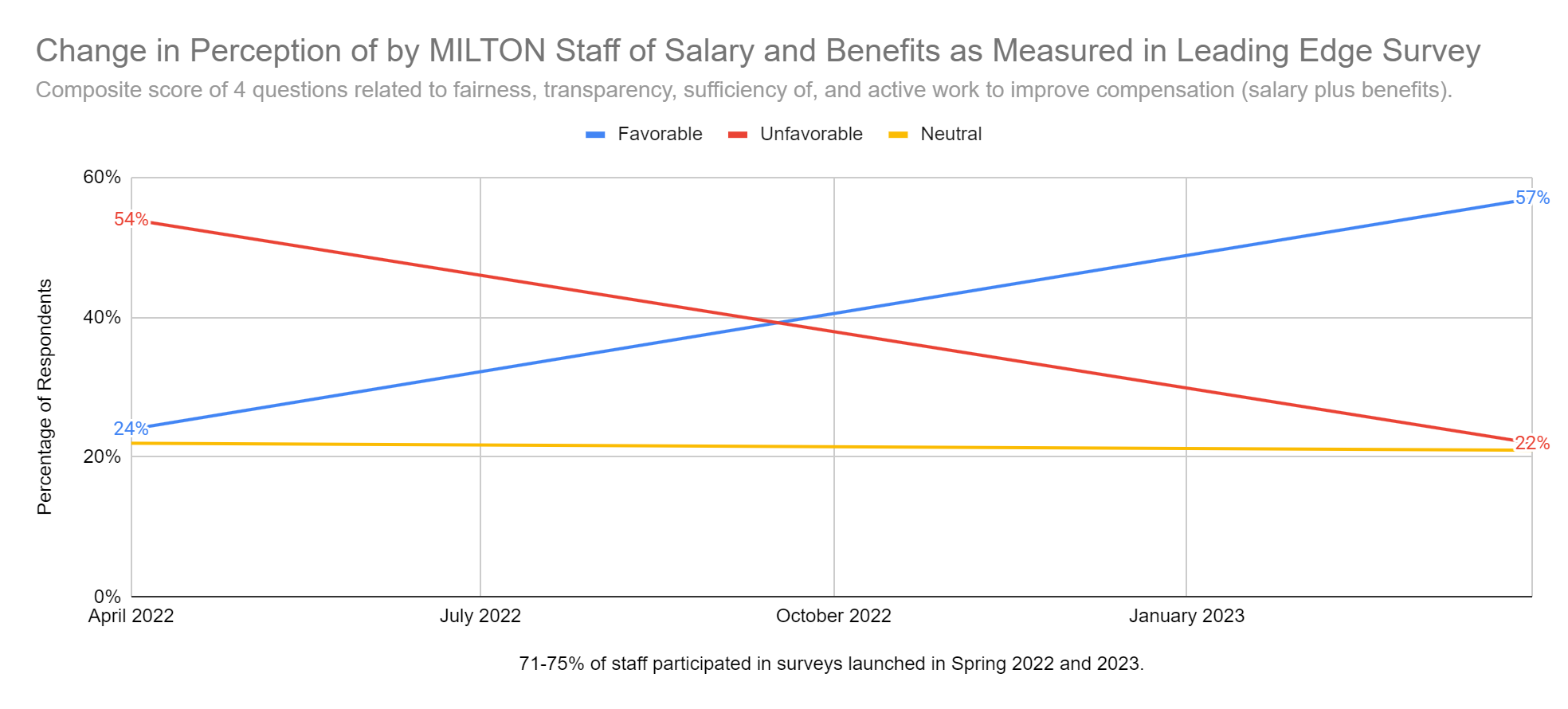In 2023–2024, Milton Gottesman Jewish Day School of the Nation’s Capital launched a new salary scale for teachers. The scale was developed through a robust partnership between teachers and school leadership that sought to align school values, strategic resource allocation and competitive compensation. This integrated process led to a highly successful implementation that enhanced transparency and clarity around compensation (as evidenced by Leading Edge survey data) and deepened teacher commitment and connection to the school.
Prior to the pandemic, a salary scale existed at the school, but data showed that faculty neither understood the scale nor felt a sense of transparency around it. Even as the scale was implemented, certain teachers were awarded additional stipends without standardization. Further, teachers with experience at Jewish day schools earned more credit than those from secular or public schools, which felt inequitable to many. Leading Edge data showed that 76% of employees either felt neutral (22%) or negative (54%) about the compensation and benefits, and just 13% felt that they understood how salaries and raises were determined. In addition to the opacity of the scale itself, teachers expressed that they felt they were undercompensated relative to their colleagues at peer institutions.










